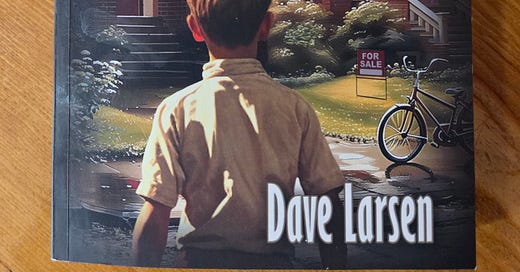Green Street in Black and White: A Chicago Story (Reformed Journal Books)
A new novel I am excited to recommend, maybe the first novel I've ever reviewed, written by a fellow Reformed Journal author and new friend
Dave Larsen's Green Street in Black and White: A Chicago Story is much more than just a nostalgic trip down one Chicago street; it's a poignant and at times heart-breaking exploration of a nation grappling with racial change, seen through the innocent yet increasingly aware eyes of a young boy. Set in the early 1960s on Chicago's South Side, specifically in the Englewood neighborhood, the novel immerses readers in a summer where youthful exuberance clashes with the burgeoning anxieties of a community undergoing significant transformation.
Larsen masterfully recreates the atmosphere of a seemingly ordinary neighborhood, one where the lively interactions of families once masked underlying ethnic divides. Through the experiences of Erik Pedersen and his friends (the "Green Street Boys"), the author vividly portrays the subtle and not-so-subtle shifts as integration becomes a reality and white flight begins to erode the familiar landscape. The narrative skillfully balances the innocent adventures of childhood—these were for me familiar boyhood experiences—with the growing awareness of prejudice and the unsettling fear gripping the adults around them.
What makes Green Street in Black and White particularly compelling is Larsen's grounding of the fiction in his own childhood experiences. The inclusion of real events, such as riding in an Irish uncle's police car and the unsettling account of a church hiring a seminary intern to track the movement of Black families, lends a powerful layer of authenticity to the narrative. These details not only paint a vivid picture of the era but also underscore the insidious nature of the anxieties and prejudices that permeated even seemingly close-knit communities. The tragic shooting serves as a stark reminder of the real-world consequences of these simmering tensions, injecting a palpable sense of unease into the boys' world.
Erik's journey is the heart of the novel. He is a relatable protagonist, navigating the complexities of a changing world with the limited understanding of youth. As he witnesses the cracks forming in his seemingly ordinary life, he is thrust into a moral conflict that forces him to question the ingrained biases and fears of those around him. Larsen expertly portrays Erik's gradual awakening, his struggle to reconcile his youthful perceptions with the harsh realities of racial prejudice and the fracturing of his community. This coming-of-age element is handled with sensitivity and nuance, making Erik's internal struggles resonate deeply with the reader.
Larsen's writing style is both accessible and evocative. He captures the voice of a young boy with authenticity, while also providing insightful glimpses into the adult world and the historical context of the time. The pacing is well-managed, allowing moments of youthful playfulness to breathe before the weight of the unfolding social changes settles in. The author avoids simplistic portrayals, instead offering a nuanced perspective on the fears and uncertainties that affected families on all sides of the racial divide, even while firmly highlighting the injustice of prejudice.
Green Street in Black and White is more than just a historical snapshot; it’s a relevant commentary on the enduring challenges of community, the complexities of integration, and the importance of confronting prejudice. The novel serves as a powerful reminder of a pivotal moment in American history and its lasting impact. The inclusion of a free, downloadable discussion guide further enhances the book's value, making it an ideal choice for book clubs and educational settings looking to spark meaningful conversations about race, community, and courage. Highly recommended!
Dave Larsen is a native Chicagoan, having spent most of his life in or near Chicago. A regular contributor to the Reformed Journal, Dave has also published articles and reviews in The Banner, Think Christian, and Christian Scholars Review. He earned a doctorate in Educational Leadership and Policy Studies from the Loyola University of Chicago, a Master of Religious Education degree from Trinity Evangelical Divinity School, and a Bachelor of Arts in English from Calvin University. Until his retirement, he was the Executive Director of the Bright Promise Fund for Urban Christian Education in Chicago. His interests include the history and architecture of Chicago, kayaking the Chicago River and area lakes, and storytelling. He and his wife Sally live in a delightful, racially diverse southern suburb of Chicago. Together they have five married children and eleven grandchildren.





Thanks, Doug! You've added this to my reading list!
As a former south sider myself, this looks compelling. Thanks for the review.